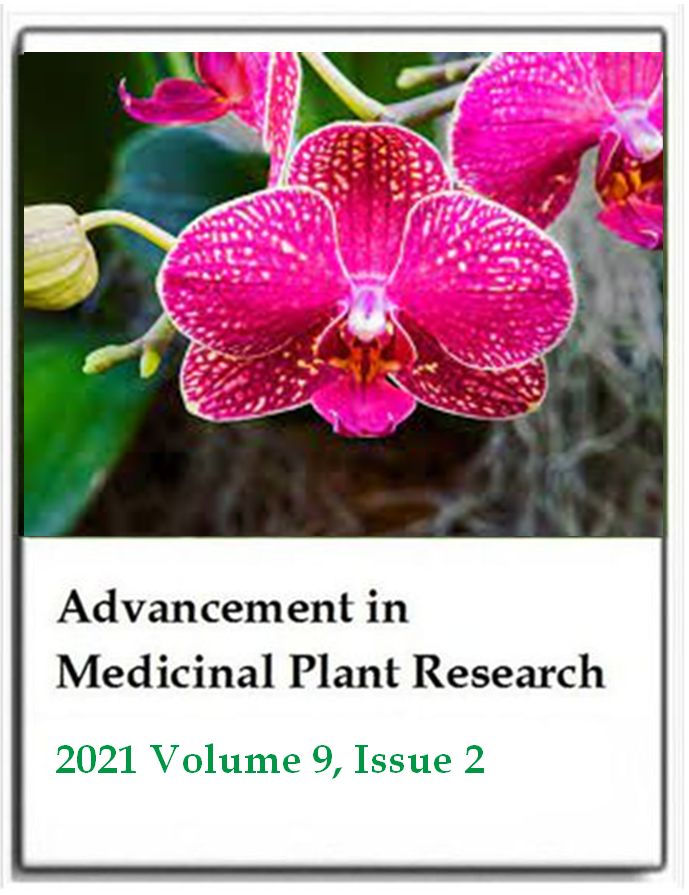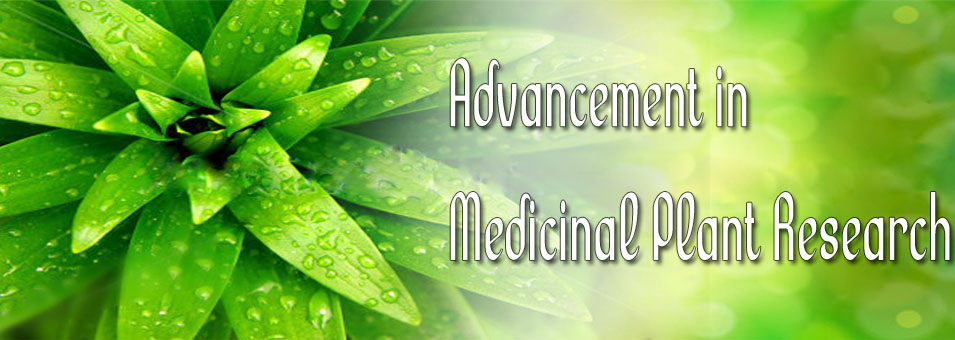Exploration of phytochemical, antioxidant and anti-inflammatory efficacy of the ethnomedicinal uses of ten orchids of Bangladesh
Minhajur Rahman and Mohammed Kamrul HudaAdvancement in Medicinal Plant Research
Published: May 31 2021
Volume 9, Issue 2
Pages 30-40
Abstract
Ten Bangladeshi orchids were harvested and filed with 66 ethnomedicinal uses from Chittagong, Khagrachari, Bandarban, and Cox's Bazar, by the most frequent being rheumatism, paralysis, epilepsy, fever, and fracture. Phytochemical, antioxidant, and anti-inflammatory properties of plants were studied in greater depth. Plant alkaloids gave a positive response (+) in varying degrees (+ to 4+) when tested qualitatively with one or more types of reagents. Anthraquinone, coumarin, flavonoids, glycosides, saponins, steroids, tannins, terpenoids, phlobatannins, and quinine were among the ten other secondary metabolites tested. Coumarin, flavonoids, glycosides, quinine, saponins, steroids, tannins, and terpenoids were found in each species, while anthraquinone and phlobatannins were found in seven and five species, respectively. Phytochemical screening revealed that Aerides odorata had the best profile. The IC50 values of different orchids ranged from 132.24 to 227.24 µg/ml. in the free radical scavenging assay, which was used to test antioxidant activity. As compared to the standard (Ascorbic acid: 73.05 µg/ml), the IC50 values of A. odorata (132.24 µg/ml), Bulbophyllum lilacinum (136.70 µg/ml), and Dendrobium tortile (138.59 µg/ml) in this bioassay were convincing. The highest scavenging ability was found in A. odorata. The heat-induced albumin denaturation bioassay was used to assess anti-inflammatory activity. Acetylsalicylic acid was used as a standard in this assay, with an IC50 value of 84.11 µg/ml. IC50 values ranged from 100.68 to 213.24 µg/ml during this experiment. Cymbidium aloifolium (100.68 µg/ml), Luisia zeylanica (111.35 µg/ml), and P. teres (121.10 µg/ml) have the lowest IC50 values in this bioassay as compared to the standard. C. aloifolium outperformed the other nine species in this bioassay. The phytochemical, antioxidant, and anti-inflammatory profile of A. odorata defined in this study favoured its ethnomedicinal uses, instituting it as the most bioactive and therapeutic orchid.
Keywords: Anti-inflammatory, antioxidant, medicinal orchids, phytochemical.
Full Text PDFThis article is published under the terms of the Creative Commons Attribution License 4.0

